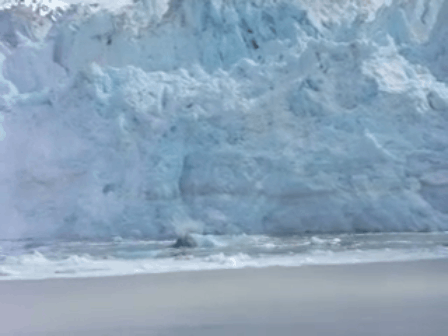The story starts with six scientists and six glaciers. They set out to Alaska and Greenland to study earthquakes caused by glaciers breaking up. To do this, they hooked seismic sensors up to these big pieces of ice. However, when they pulled this data down, they heard something new: the sound of melting glaciers.
Tim Bartholomaus, a postdoctoral fellow at UT’s Institute for Geophysics, says the melting glacial water makes a buzzing, whirring sound. It’s a sound that the research team found completely by accident.
Bartholomaus says they initially intended to study the quakes that happen when iceberg calving, when sheets of ice fall off glaciers into the water. When they collected the data, however, there was a background noise in the calving recordings, and the sound wave, he thought, resembled the shape of a sound wave from a glacier river. A dead giveaway was that the sound was louder in the summer and softer in the winter.

“After ruling out a number of other different factors, I was left that the conclusion that we could use what initially had been a downside and had been interfering with the study that I intended,” he says. “I could actually use this as a benefit as a way to learn something new about a totally different problem in glacier behavior.”
Glaciers are made of frozen fresh water. That water is less dense than the warm, salty ocean. When glaciers melt, the melt starts at the tip of the glacier deep underwater. That cold water then rises and “bring[s] that warm ocean water right up against the face of the glacier where it can melt the glacier,” says Bartholomaus.
He compares it to an ice cube in a pot of warm water: If you stir the water, the ice melts more quickly. The warm water percolating through the glacier stirs the glacier in the proverbial pot. Bartholomaus and his team’s use of seismometers will help measure that water flow to discover why one glacier may be melting more slowly than another.
“We’ve just never had the ability to track that water moving underneath glaciers when the glacier ends in the ocean until now,” he says. “This tool now will allow us to understand a lot of the different factors that are controlling glacier behavior, like glacier speed [and] glacier melting.”
Bartholomaus and the five other scientists published a report this week detailing how seismic sensors can be used to calculate the speed of melting glacial water, which will help scientists predict which glaciers will break off and when – important information to have in forecasting the effects of climate change.


